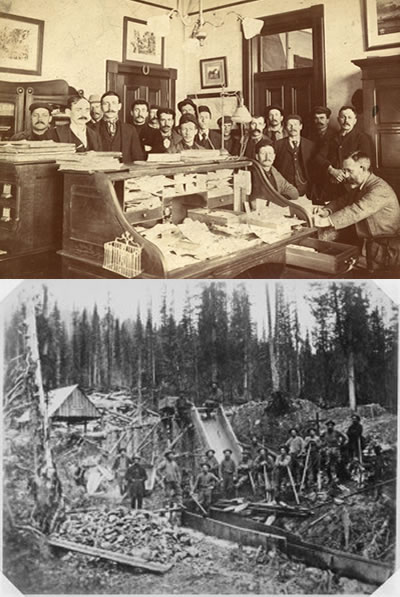4.8: Suggested Activities
- Page ID
- 21987
\( \newcommand{\vecs}[1]{\overset { \scriptstyle \rightharpoonup} {\mathbf{#1}} } \)
\( \newcommand{\vecd}[1]{\overset{-\!-\!\rightharpoonup}{\vphantom{a}\smash {#1}}} \)
\( \newcommand{\id}{\mathrm{id}}\) \( \newcommand{\Span}{\mathrm{span}}\)
( \newcommand{\kernel}{\mathrm{null}\,}\) \( \newcommand{\range}{\mathrm{range}\,}\)
\( \newcommand{\RealPart}{\mathrm{Re}}\) \( \newcommand{\ImaginaryPart}{\mathrm{Im}}\)
\( \newcommand{\Argument}{\mathrm{Arg}}\) \( \newcommand{\norm}[1]{\| #1 \|}\)
\( \newcommand{\inner}[2]{\langle #1, #2 \rangle}\)
\( \newcommand{\Span}{\mathrm{span}}\)
\( \newcommand{\id}{\mathrm{id}}\)
\( \newcommand{\Span}{\mathrm{span}}\)
\( \newcommand{\kernel}{\mathrm{null}\,}\)
\( \newcommand{\range}{\mathrm{range}\,}\)
\( \newcommand{\RealPart}{\mathrm{Re}}\)
\( \newcommand{\ImaginaryPart}{\mathrm{Im}}\)
\( \newcommand{\Argument}{\mathrm{Arg}}\)
\( \newcommand{\norm}[1]{\| #1 \|}\)
\( \newcommand{\inner}[2]{\langle #1, #2 \rangle}\)
\( \newcommand{\Span}{\mathrm{span}}\) \( \newcommand{\AA}{\unicode[.8,0]{x212B}}\)
\( \newcommand{\vectorA}[1]{\vec{#1}} % arrow\)
\( \newcommand{\vectorAt}[1]{\vec{\text{#1}}} % arrow\)
\( \newcommand{\vectorB}[1]{\overset { \scriptstyle \rightharpoonup} {\mathbf{#1}} } \)
\( \newcommand{\vectorC}[1]{\textbf{#1}} \)
\( \newcommand{\vectorD}[1]{\overrightarrow{#1}} \)
\( \newcommand{\vectorDt}[1]{\overrightarrow{\text{#1}}} \)
\( \newcommand{\vectE}[1]{\overset{-\!-\!\rightharpoonup}{\vphantom{a}\smash{\mathbf {#1}}}} \)
\( \newcommand{\vecs}[1]{\overset { \scriptstyle \rightharpoonup} {\mathbf{#1}} } \)
\( \newcommand{\vecd}[1]{\overset{-\!-\!\rightharpoonup}{\vphantom{a}\smash {#1}}} \)
\(\newcommand{\avec}{\mathbf a}\) \(\newcommand{\bvec}{\mathbf b}\) \(\newcommand{\cvec}{\mathbf c}\) \(\newcommand{\dvec}{\mathbf d}\) \(\newcommand{\dtil}{\widetilde{\mathbf d}}\) \(\newcommand{\evec}{\mathbf e}\) \(\newcommand{\fvec}{\mathbf f}\) \(\newcommand{\nvec}{\mathbf n}\) \(\newcommand{\pvec}{\mathbf p}\) \(\newcommand{\qvec}{\mathbf q}\) \(\newcommand{\svec}{\mathbf s}\) \(\newcommand{\tvec}{\mathbf t}\) \(\newcommand{\uvec}{\mathbf u}\) \(\newcommand{\vvec}{\mathbf v}\) \(\newcommand{\wvec}{\mathbf w}\) \(\newcommand{\xvec}{\mathbf x}\) \(\newcommand{\yvec}{\mathbf y}\) \(\newcommand{\zvec}{\mathbf z}\) \(\newcommand{\rvec}{\mathbf r}\) \(\newcommand{\mvec}{\mathbf m}\) \(\newcommand{\zerovec}{\mathbf 0}\) \(\newcommand{\onevec}{\mathbf 1}\) \(\newcommand{\real}{\mathbb R}\) \(\newcommand{\twovec}[2]{\left[\begin{array}{r}#1 \\ #2 \end{array}\right]}\) \(\newcommand{\ctwovec}[2]{\left[\begin{array}{c}#1 \\ #2 \end{array}\right]}\) \(\newcommand{\threevec}[3]{\left[\begin{array}{r}#1 \\ #2 \\ #3 \end{array}\right]}\) \(\newcommand{\cthreevec}[3]{\left[\begin{array}{c}#1 \\ #2 \\ #3 \end{array}\right]}\) \(\newcommand{\fourvec}[4]{\left[\begin{array}{r}#1 \\ #2 \\ #3 \\ #4 \end{array}\right]}\) \(\newcommand{\cfourvec}[4]{\left[\begin{array}{c}#1 \\ #2 \\ #3 \\ #4 \end{array}\right]}\) \(\newcommand{\fivevec}[5]{\left[\begin{array}{r}#1 \\ #2 \\ #3 \\ #4 \\ #5 \\ \end{array}\right]}\) \(\newcommand{\cfivevec}[5]{\left[\begin{array}{c}#1 \\ #2 \\ #3 \\ #4 \\ #5 \\ \end{array}\right]}\) \(\newcommand{\mattwo}[4]{\left[\begin{array}{rr}#1 \amp #2 \\ #3 \amp #4 \\ \end{array}\right]}\) \(\newcommand{\laspan}[1]{\text{Span}\{#1\}}\) \(\newcommand{\bcal}{\cal B}\) \(\newcommand{\ccal}{\cal C}\) \(\newcommand{\scal}{\cal S}\) \(\newcommand{\wcal}{\cal W}\) \(\newcommand{\ecal}{\cal E}\) \(\newcommand{\coords}[2]{\left\{#1\right\}_{#2}}\) \(\newcommand{\gray}[1]{\color{gray}{#1}}\) \(\newcommand{\lgray}[1]{\color{lightgray}{#1}}\) \(\newcommand{\rank}{\operatorname{rank}}\) \(\newcommand{\row}{\text{Row}}\) \(\newcommand{\col}{\text{Col}}\) \(\renewcommand{\row}{\text{Row}}\) \(\newcommand{\nul}{\text{Nul}}\) \(\newcommand{\var}{\text{Var}}\) \(\newcommand{\corr}{\text{corr}}\) \(\newcommand{\len}[1]{\left|#1\right|}\) \(\newcommand{\bbar}{\overline{\bvec}}\) \(\newcommand{\bhat}{\widehat{\bvec}}\) \(\newcommand{\bperp}{\bvec^\perp}\) \(\newcommand{\xhat}{\widehat{\xvec}}\) \(\newcommand{\vhat}{\widehat{\vvec}}\) \(\newcommand{\uhat}{\widehat{\uvec}}\) \(\newcommand{\what}{\widehat{\wvec}}\) \(\newcommand{\Sighat}{\widehat{\Sigma}}\) \(\newcommand{\lt}{<}\) \(\newcommand{\gt}{>}\) \(\newcommand{\amp}{&}\) \(\definecolor{fillinmathshade}{gray}{0.9}\)Suggested Activities
Activity 1
On the interactive map of BC[1] select the different types of mining taking places across the province and answer the following questions:
- What are the five different types of landscapes illustrated in the map? What is the relationship between the types of mines you see and the type of landscape?
- How many mines are currently in operation across BC?
- Where are most of the mines located?
- How many are coal mines? Where are they mainly located?
- How many are metal mines? Where are they mainly located?
- How many are industrial mineral operations? Where are they mainly located?
Activity 2
On a map of British Columbia, locate Yale, which is just north of Hope, on the Fraser River. (Hope is directly east of Vancouver and directly north of Ross Lake in Washington.) Follow Highway 1 north to Cache Creek and then continue north on Highway 97 to Quesnel. At Quesnel, go east to Bowron Lake Provincial Park, and just before coming to the Bowron Lakes you will find Barkerville. What is Barkerville like as a town today? Can you find anything on its historical significance?
Activity 3
Using the historical gold rush interactive map[2] can you find out anything on the smaller gold rushes between 1859 and 1869? What region of BC were they located in?
The Big Bend gold rush was in an area of the upper Columbia River which was extremely remote from any form of non-First Nations civilization in that period. It was impossibly remote from the Fraser River, but some managed to reach the Big Bend rush overland up the Rocky Mountain Trench from what is now Montana, or up the Columbia River itself. Imagine you are a prospector stating from Victoria, making the journey to area. Create a map of your journey on Google maps as it would look today and write 10 tweets/Facebook posts documenting your trip.
Activity 4
Watch the two videos Mining Watch Canada: A Video Profile[3] and Sacred Headwaters,[4] both created by the organization Mining Watch, and answer these questions:
- Who is impacted most by mining?
- Why should we care about the rivers?
- What resources are we losing from mining?
Activity 5
“We must do the responsible work. It is one thing to dig the earth. It is another to care for it” (anonymous First Nations saying). What do you understand by this saying? What does it tell you about the importance of the relationship between people and the land? Can you think of an example in BC where this relationship is being threatened or is broken?
Activity 6
Skim this Globe and Mail newspaper article[5] from February 2013 and answer the questions:
- What is worse than environmental costs, according to Darlene Simpson?
- Locate the Skii km Lax Ha Band land on Google maps. What environmental features located in the area would be affected by the mining?
- What employment has the mining brought to the people in the area?
- What is mined in the area?
Activity 7
Imagine you are organizing a kick starter or crowd-funding campaign dealing with an issue on rights and/or environment at the Endako Mine. Share it with your family and friends and see how much money you “raise.”
Activity 8
The photographs (Fig 4.10) show a group of miners queuing for their license to mine and then working in a mine during the gold rush. Can you describe the conditions you see in the photographs for the workers? Why do you think men (and some women) would have endured these conditions?

Attributions
- Figure 4.0. Miners line up in Custom House Victoria for certificates to mine during the Klondike gold rush by James Skitt Matthews (http://searcharchives.vancouver.ca/miners-line-up-in-custom-house-for-certificates-to-mine-during-klondyke-gold-rush) is in the public domain and Photograph of miners during the gold rush by unknown (http://commons.wikimedia.org/wiki/File:Photograph_of_Miners_During_the_Gold_Rush_-_NARA_-_298079.jpg) is in the public domain
- Interactive map of BC www.mineralsed.ca/s/Geology.asp↵
- Interactive Gold Rush map on Google Maps https://www.google.com/maps/ms?msid=206001999525231667103.0004fb997745c1087bebd&msa=0↵
- Mining Watch Canada: A video Profile www.miningwatch.ca/miningwatch-canada-video-profile↵
- Sacred Headwaters www.miningwatch.ca/sacred-headwaters-wade-davis-and-photos-paul-colangelo↵
- Globe and Mail newspaper article for activity 7 http://www.theglobeandmail.com/news/british-columbia/why-one-first-nation-band-is-embracing-mining-despite-its-environmental-impacts/article8158085/↵

